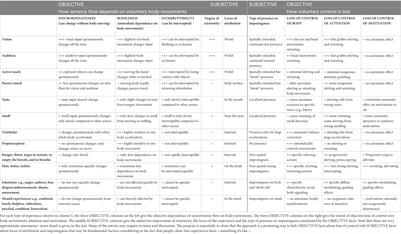How voluntary control over information and body movements determines “what it’s like” to have perceptual, bodily, emotional and mental experiences

Two very fundamental aspects of phenomenal experiences underline the fact that they seem to have “something it’s like.” One aspect is the fact that experiences have a locus: they Can seem “external” (perceptual), “internal” (interoceptive, bodily or emotional) or “mental.” A second fundamental aspect is the imposingness of experiences.
They can seem “present” to us in different ways, sometimes seeming displayed before us with “spatio-temporal presence.” Both these aspects of “what it’s like” can be identified with the degree to which we can voluntarily control what we are doing when we engage in an experience.
The external/internal/mental dimension is determined by how our voluntary bodily actions can influence the sensorimotor flow of information.
The degree of imposingness of experiences and their “spatio-temporal presence” Is determined by how our voluntary actions are impeded or assisted by innate, attention-grabbing mechanisms. By elucidating these two most fundamental aspects of “what it’s like,” and taken together with prior work on inter- and intra-modal differences in experiences, this article suggests a path toward a scientific theory of the “hard problem” of phenomenal consciousness, explaining why experiences feel like something rather than feeling like nothing.
Read the full article at the original website
References:
